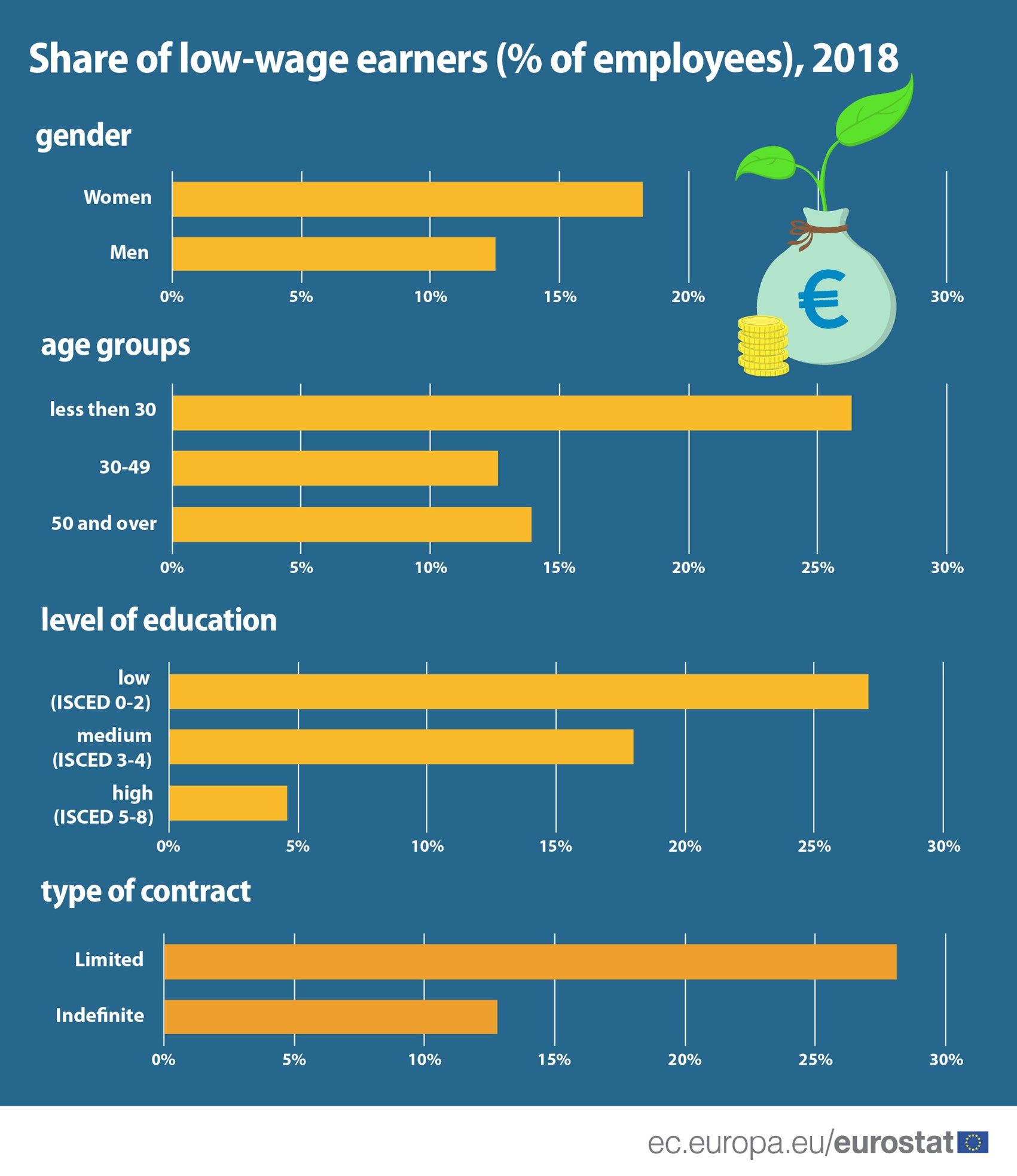In 2018, 15.3% of employees in the European Union (EU) were low-wage earners (this means that they earned two-thirds or less of their national median gross hourly earnings) compared to 16.4% in 2014. 18.2% of female employees were low-wage earners in 2018, compared with 12.5% of male employees. In 2014, 19.9% among female employees and 13.2% among males were low wage earners.
Highest share of low-wage earners in Latvia, lowest in Sweden
The proportion of low wage earners varied significantly among Member States in 2018. The highest share was observed in Latvia (23.5%), followed by Lithuania (22.3%), Estonia (22.0%), Poland (21.9%) and Bulgaria (21.4%). In contrast, less than 10% of employees were low-wage earners in Sweden (3.6%), Portugal (4.0%), Finland (5.0%), Italy (8.5%), France (8.6%) and Denmark (8.7%).
As regards the distribution by age group, low-wage earners accounted for more than a quarter (26.3%) of employees aged less than 30. The proportion of low-wage earners in the older age groups was much less, at 13.9% in the 50 and above age group and 12.6% in the 30-49 age group.
The lower the level of a person’s education, the higher the likelihood of being a low-wage earner. More than a quarter (27.1%) of employees in the EU with a low education level were low-wage earners. Fewer employees with a medium level of education were low-wage earners (18.0% of employees), while low-wage earners accounted for just 4.6% of employees with a high education level. For employees whose contract of employment was of limited duration, 28.1% were low-wage earners, compared with 12.8% of those with an indefinite contract.
Highest share of low-wage earners working in the food and accommodation sector
In 2018, the share of low-wage earners recorded in the EU was highest (39.0%) in the NACE Rev. 2 section: I (‘Accommodation and food service activities’); followed by 33.3% in section N (‘Administrative and support service activities’) that includes in particular the persons employed by interim agencies.
For more information, you can read our Statistics Explained article Earnings statistics.
Note: The European Union (EU) includes 27 EU Member States. The United Kingdom left the European Union on 31 January 2020. Further information is published here.
To contact us, please visit our User Support page.
For press queries, please contact our Media Support.



